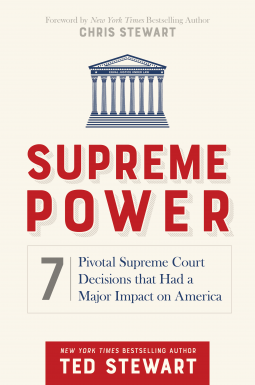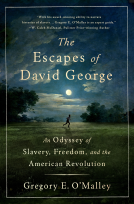
Supreme Power
7 Pivotal Supreme Court Decisions That Had a Major Impact on America
by Ted Stewart
This title was previously available on NetGalley and is now archived.
Send NetGalley books directly to your Kindle or Kindle app
1
To read on a Kindle or Kindle app, please add kindle@netgalley.com as an approved email address to receive files in your Amazon account. Click here for step-by-step instructions.
2
Also find your Kindle email address within your Amazon account, and enter it here.
Pub Date Sep 26 2017 | Archive Date Oct 06 2017
Shadow Mountain Publishing | Shadow Mountain
Description
This fascinating book reveals the complex history of the Court as told through seven pivotal decisions. These cases originally seemed narrow in scope, but they vastly expanded the interpretation of law. Such is the power of judicial review to make sweeping, often unforeseen, changes in American society by revising the meaning of our Constitution.
Each chapter presents an easy-to-read brief on the case and explains what the decisions mean and how the Court ruling, often a 5-4 split, had long-term impact. For example, in Lochner v. New York, a widely accepted turn-of-the-twentieth--century New York State law limited excessive overtime for bakery workers. That law was overturned by the Court based on the due process clause of the Constitution. The very same precedents, Stewart points out, were used by the Court seventy years later and expanded to a new right to privacy in Roe v. Wade, making abortion legal in the nation.
Filled with insight, commentary, and compelling stories of ordinary citizens coming to the judiciary for remedy for the problems of their day, Supreme Power illustrates the magnitude of the Court’s power to interpret the Constitution and decide the law of the land.
Available Editions
| EDITION | Other Format |
| ISBN | 9781629723402 |
| PRICE | $27.99 (USD) |
| PAGES | 256 |
Average rating from 7 members
Featured Reviews
 Kyle E, Reviewer
Kyle E, Reviewer
On the surface, reading a book about Supreme Court cases seems daunting, and certainly something that most casual readers would not aspire to do. Books about the Supreme Court tend to be reserved for those with a special admiration for history and the law. However, Ted Stewart is able to present seven cases in a laid-back manner creating a primer on the Supreme Court which is easy to understand and cultivate knowledge from.
Stewart opens the book with a quick exploration of the formation of the Supreme Court, the intentions of the Founding Fathers, and what powers the Constitution actually gives to the federal and state governments. This brief history lesson allows the reader to prepare their mind without prejudice for the legal battles which will follow.
The seven cases presented range from well-known cases such as Marbury v. Madison or Plessy v. Ferguson, that have been covered ad nauseam (and rightfully so) throughout an individual's scholastic endeavors to little known, yet vital cases like Lochner v. The State of New York. Stewart is able to convey why the case came to be, what the pertinent facts were, how the Supreme Court approached the case, and the lasting impact of each ruling. Each case is fascinating in its own right, and how the precedent established from each one has shaped our country, altered the power of the federal government, and even at times usurped the Constitution is incredible. For example, going from overtime rights of bakers to abortion rights seventy years later is a fascinating legal journey which most readers never would have made without Stewart's guidance.
This book does not condone or condemn the rulings of the Supreme Court, but rather presents the facts and impact for the reader, and then allows the audience to determine if and when the Court has gone too far.
Readers who liked this book also liked:
We Are Bookish
General Fiction (Adult), New Adult, Romance











